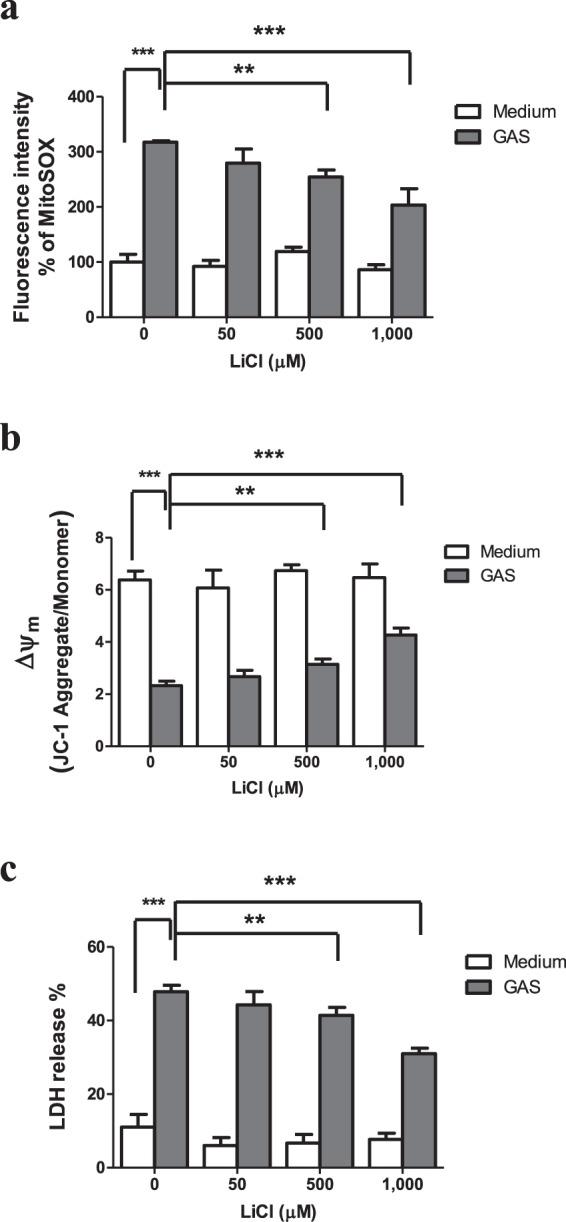Figure 2.

LiCl inhibited the mitochondrial ROS production and prevented the loss of Δψm and cell death in the GAS-infected RAW264.7 cells. RAW264.7 cells were infected with the wild type GAS for 1 h at a MOI of 25 in the presence of different concentrations of LiCl. Mitochondrial ROS and Δψm of the GAS-infected cells were measured by MitoSOX and JC-1 respectively at 3 h post-infection. (a) Mitochondrial ROS production in the GAS-infected RAW264.7 cells was inhibited by LiCl in a dose-dependent manner. Fluorescence intensity % was shown and expressed as described in Materials and Methods. Results are represented as mean ± SD. In LiCl-treated groups, **P < 0.01, ***P < 0.001 compared with the GAS-infected group. In the GAS-infected group, ***P < 0.001 compared with medium only (without GAS) group (One-way ANOVA test followed by Tukey’s test; n = 4). (b) The change of Δψm in GAS-infected cells was inhibited by LiCl. The level of Δψm in RAW264.7 cells was detected by JC-1 as described in Materials and Methods. In LiCl-treated groups, **P < 0.01, ***P < 0.001 compared with the GAS-infected group. In the GAS-infected group, ***P < 0.001 compared with medium only (without GAS) group (One-way ANOVA test followed by Tukey’s test; n = 4). (c) The LDH release of GAS-infected cells was dose-dependently inhibited by LiCl. The culture supernatants of GAS-infected RAW264.7 cells were collected at 18 h post-infection and then measured by LDH detection kit. LDH release % was shown and expressed as the mean ± SD, as described in Materials and Methods. In LiCl-treated groups, **P < 0.01, ***P < 0.001 compared with GAS-infected group. In the GAS-infected group, ***P < 0.001 compared with medium only (without GAS) group (One-way ANOVA test followed by Tukey’s test; n = 4).
